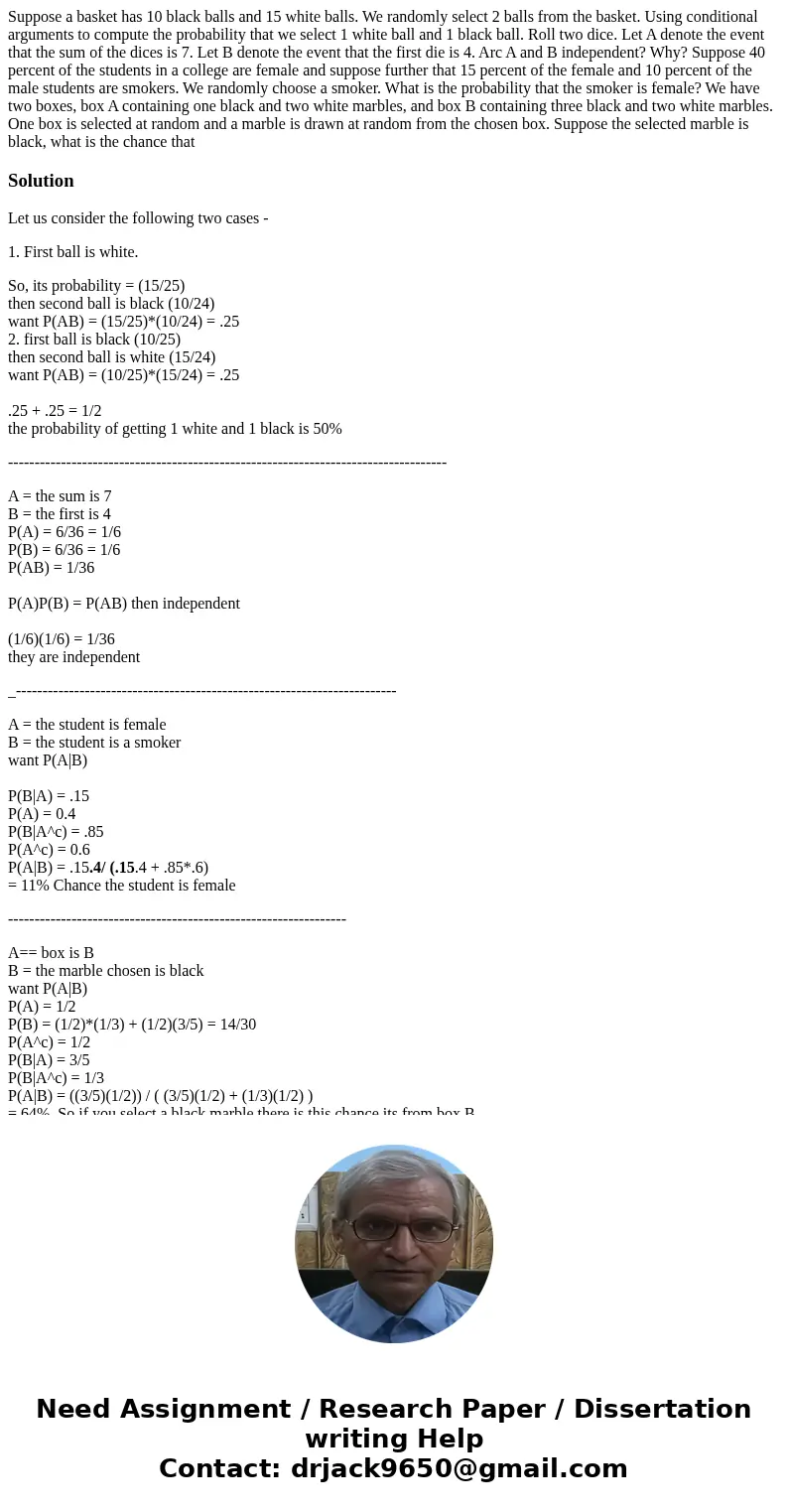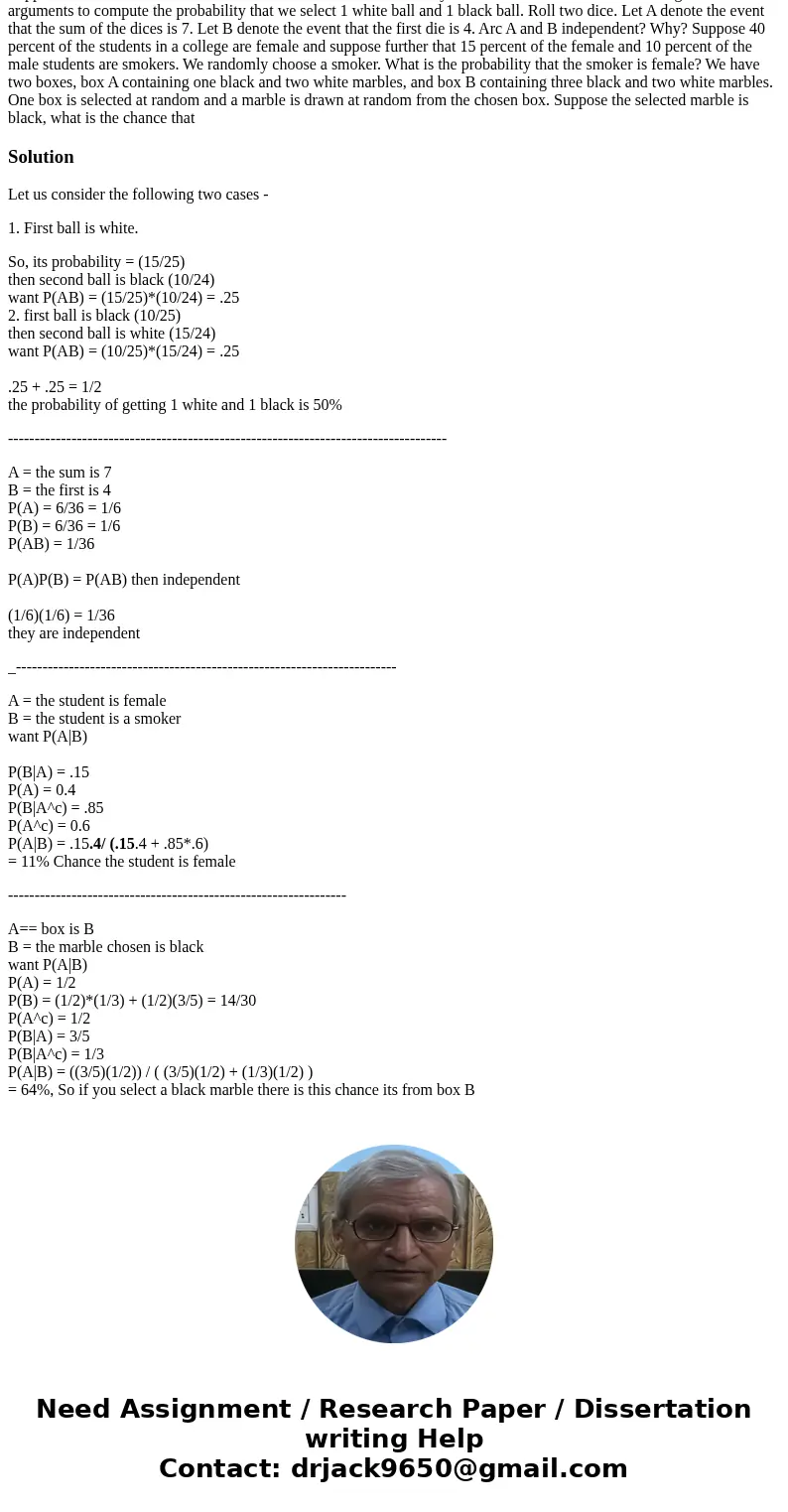Suppose a basket has 10 black balls and 15 white balls We ra
Solution
Let us consider the following two cases -
1. First ball is white.
So, its probability = (15/25)
then second ball is black (10/24)
want P(AB) = (15/25)*(10/24) = .25
2. first ball is black (10/25)
then second ball is white (15/24)
want P(AB) = (10/25)*(15/24) = .25
.25 + .25 = 1/2
the probability of getting 1 white and 1 black is 50%
-----------------------------------------------------------------------------------
A = the sum is 7
B = the first is 4
P(A) = 6/36 = 1/6
P(B) = 6/36 = 1/6
P(AB) = 1/36
P(A)P(B) = P(AB) then independent
(1/6)(1/6) = 1/36
they are independent
_------------------------------------------------------------------------
A = the student is female
B = the student is a smoker
want P(A|B)
P(B|A) = .15
P(A) = 0.4
P(B|A^c) = .85
P(A^c) = 0.6
P(A|B) = .15.4/ (.15.4 + .85*.6)
= 11% Chance the student is female
----------------------------------------------------------------
A== box is B
B = the marble chosen is black
want P(A|B)
P(A) = 1/2
P(B) = (1/2)*(1/3) + (1/2)(3/5) = 14/30
P(A^c) = 1/2
P(B|A) = 3/5
P(B|A^c) = 1/3
P(A|B) = ((3/5)(1/2)) / ( (3/5)(1/2) + (1/3)(1/2) )
= 64%, So if you select a black marble there is this chance its from box B


 Homework Sourse
Homework Sourse